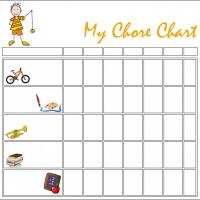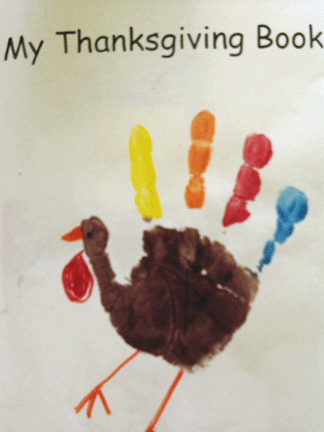I’ve found that a cool way to differentiate in all subjects is to give open ended assignments or ones where they do a project. Those who are at a higher level will most often want to do a little more, add creative embellishments to it, or else go deeper into a subject. Those with less ability will write less, do smaller projects, and go into a little less depth. These are natural diffentiating assignments. I will give examples of what I mean.
 |
| You can buy this math menu at Teachersparadise.com a great center for money adding that is naturally very differentiated…high kids will choose challenging amounts….low kids will add up easy combinations… |
I give lots of choices in my classroom. They get their choice of from several options depending on if it is spelling menu of 21 options to do at night, 6 reading centers to choose from all week, writing prompts, book reports, or math games. So they always have some sort of choice, and there is always a harder and an easier option. That is the key to differentiate without having to make 3 separate lessons for everything you do. Game choice is easy. If you teach a new game a week in math that is a good start. By the end of a unit they have learned 2 or 3 games on that topic. And they can choose which one to play. I keep the adding and subtracting games out all year and just add to the pile using gallon baggies layered easy (in front) to hard (in back).
And don’t forget about your classroom computers as differentiation tools. They are a cool center for kids to use. There are many online and cd games kids can play in math.
 |
| You can get this book of Math projects and games at Scholastic |
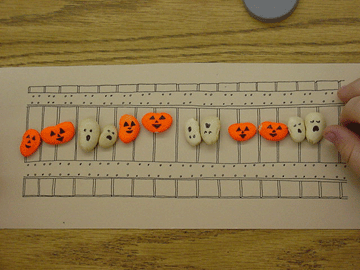 |
| These handpanited lima bean counters idea is from Little Giraffes.com a fabulous website for ideas!!! |
Now a few years back when I was getting my gifted and talented endorsement to be able to teach gifted kids, I met up with a few teachers who all wanted to learn how to better differentiate math. I think we came up with a really good and easy way to do it. We take a strand of math such as measurement. We do a short, quick and dirty 12 question assessment sheet and score them and then place them in 3 groups; high medium and low ability. Then for that particular unit they are taught differently, but these groups are never set in stone and are always fluid.
Then we teach the regular lesson to everyone. Those who were in The high group do the regular seatwork assignment and I meet with them first, in a small group, to give them either a more challenging optional assignment or some challenge games to do with partners or in groups. I meet with this group once a week after the regular math directed lesson. And hopefully the math challenge assignments and games will last the week in interest level. Very occasionally I gave them a higher grade level “packet”. This was not the norm though, but sometimes I stooped to a packet.
The medium group does the regular math seatwork after lessons and then goes to math centers. All the math centers can have differentiation in them built right in. Some medium kids will learn the games from the high kids and play their games too. An example of centers in measurement might be rulers and a tote tray full of measure worms, and some paper with 1 to 12 listed for answers. Kids could measure in centimeters and inches or choose one or the other. Another center could be using tape measures to measure each others elbows to fingers, head circumference, feet and body length. The cut outs could be gingerbread men they write the answers on the body part they measured.
The low group I meet with daily right after the regular lesson and kids have started independent seatwork. They meet at a table with me in groups of 3. As soon as we see they are doing it well on their own they go back to do work independently. Then we have a little time to call a few of the medium kids a day to work and reteach if necessary to be sure each is “getting it”.
This way you are covering your low kids on a math topic every day, your medium as you can manage meets, and your high you are challenging even if it is only once a week in a meet and with the extra games, problem solvings, or more challenging seatwork. You’ve met with all 3 groups independently over the course of a week or two. The challenge is being prepared for those high kids with an extra activity once a week. That takes more organization on the teacher’s part. But it is highly doable. Sometimes it would be a problem solving from a brain teaser book. Sometimes things like Sodoku, magic squares, a game from the math series I quickly teach that is too high for the mainstream class or a few word problem ideas for them to write and share with the class. Sometimes it would be a file folder game brand new to the class, or I used cards, dominos and dice a lot.
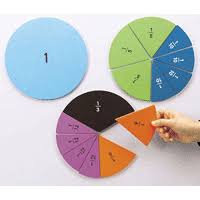 |
| I have several of these fraction circles I’ve purchased for centers. They are fun and easy! |
Sometimes I would just peruse the monthly teacher IDEA books like the one to the left. They would have art projects and cute writing paper and I’d come up with a math prompt or word problem and cute art and writing to go with it. That helped me to really flesh out my strands of math too. And the kids love to mesh art and math. And it would take multiple days to finish. This June book has frogs, turtles, whales and goldfish pages. The kids could do a “Whale of a Word Problem” or a “Goldfish cracker subtraction set of 4 problems” they write themselves, maybe even double digit. I always had the kids put a yellow sticky paper over the answers and we would pick a few a week to read the problems to each other aloud and do them on our individual white boards. The first 3 kids with the correct answers got a gummy bear. And you can have some “authentic assessment” in seeing who can’t do word problems, am I right?
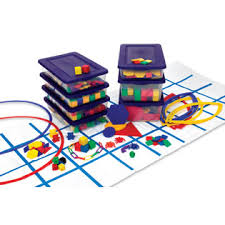 |
| Graphing mats to use with all kinds of manipulatives is a great cooperative learning center |
Every other Friday I give tests and then finishers have math games and centers when they are done, so even some of your low kids will get to go have free choice if they didn’t have it during the week. That is the goal anyway. Then a few weeks later when you change math topics….BE SURE…to give a new pretest to see who is high medium and low on this strand or topic. (Don’t lock kids into the same 3 groups all year) And it begins again.
A great website for math is called FUNBRAIN. The link is http://www.funbrain.com/numbers.html.
I struggle with preparation most weeks. So in a pinch I’ll have my high kids work together on computer games in pairs on my classroom computers. Some weeks I’m more prepared with cool games and activities and writing prompts for math or math journal problem solvings and it’s all smooth sailing. Some weeks I feel like I’m dragging the whole class along, you know how it is. I’ll post more tomorrow on some of my games.
Everyday Teaching has this hinged bear


